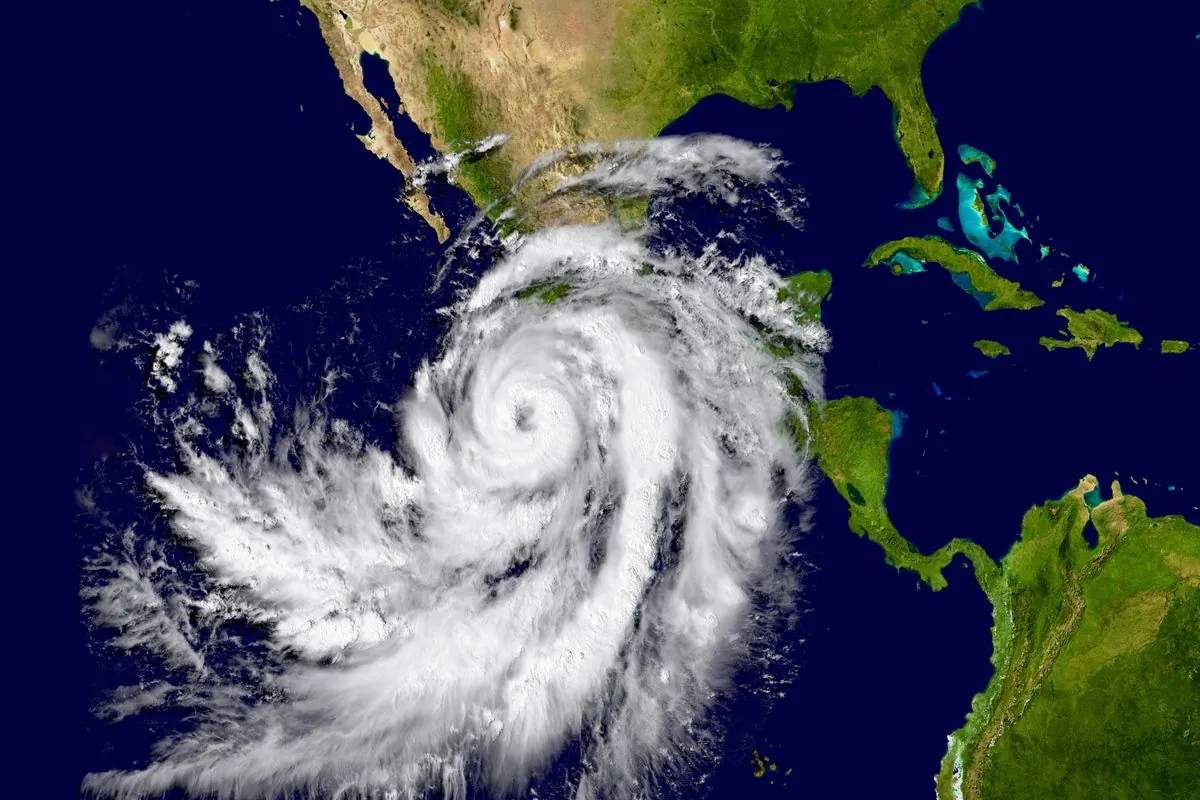Hurricane John Batters Mexico's Pacific Coast with Flood Threat
Hurricane John, rapidly intensifying to Category 3, struck Mexico's southern Pacific coast. Authorities rushed evacuations as the storm threatened life-threatening floods and surges in popular coastal areas.

Hurricane John made landfall on Mexico's southern Pacific coast, rapidly intensifying to a Category 3 storm and catching authorities and residents off guard. The hurricane struck near Punta Maldonado late Monday night, with maximum sustained winds reaching 120 mph (190 kph).
Andrés Manuel López Obrador, Mexico's President, urged residents to prioritize safety:
"Seek higher ground, protect yourselves and do not forget that life is the most important thing; material things can be replaced. We are here."
By early Tuesday, John had weakened to a Category 2 hurricane, but continued to pose significant threats to coastal areas. The U.S. National Hurricane Center warned of "life-threatening" storm surges and flash floods along the Pacific coast near Oaxaca.
The rapid intensification of Hurricane John aligns with recent trends in hurricane behavior. AccuWeather Senior Meteorologist Matt Benz attributed this phenomenon to warmer oceans, which provide more fuel for hurricanes. This pattern has become increasingly common in modern times, presenting new challenges for forecasters and emergency responders.
Authorities in Guerrero and Oaxaca states took preventive measures, suspending classes in coastal zones and evacuating residents. Oaxaca's governor reported the evacuation of 3,000 people and the establishment of 80 shelters. The state also deployed 1,000 military and state personnel to address the emergency.
The hurricane's impact extends beyond immediate safety concerns. Puerto Escondido, known for its world-class surfing beaches, and Acapulco, once a popular resort for Hollywood stars, are among the affected areas. These tourist hubs, crucial to the local economy, now face potential long-term recovery challenges.
Hurricane John's arrival comes just a year after Hurricane Otis devastated Acapulco, highlighting the region's vulnerability to increasingly intense storms. Climate change is believed to be a contributing factor to the rising intensity of hurricanes globally.
The National Hurricane Center predicts substantial rainfall through Thursday, with some areas expected to receive up to 50 centimeters (20 inches) of rain. This heavy precipitation poses significant flood risks, particularly in a region where the terrain can exacerbate flooding issues.
Mexico's extensive coastline, stretching over 9,000 kilometers, makes it particularly susceptible to hurricane impacts. The country's Pacific coast, part of the "Ring of Fire" seismic and volcanic zone, faces multiple natural hazards.
As communities brace for the storm's aftermath, the focus remains on immediate safety and future preparedness. Claudia Sheinbaum, Mexico's President-elect, has emphasized the need for improved early warning systems, drawing parallels to the country's earthquake alert system.
The impacts of Hurricane John are expected to be felt for weeks to months, underscoring the long-term challenges posed by increasingly intense hurricane seasons. As climate change continues to influence weather patterns, coastal communities in Mexico and beyond must adapt to this new reality of more frequent and powerful storms.


































